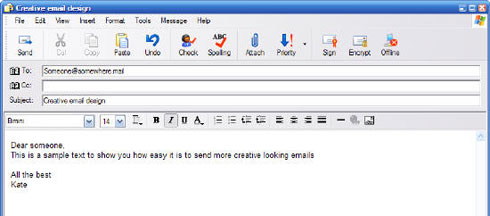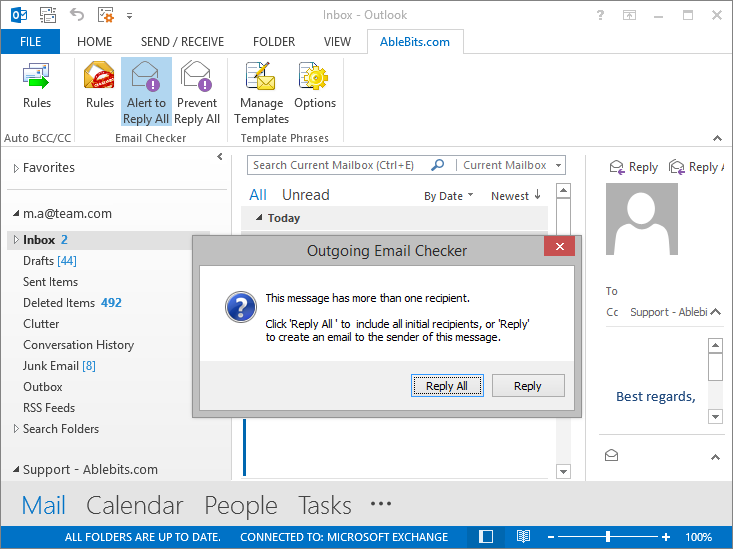Email Etiquette
Email etiquette refers to following rules for grammar, tone, writing style, and purpose when writing emails professionally.

Even in this age of information technology and rapid electronic communication, everyone must follow certain email etiquette and ethics when interacting with the computer or any other gadget—various electronic communication sources, such as Email, Facebook, Twitter, Skype, etc. Today, email etiquette rules in the workplace are not just limited to sending an important piece of the message; its circumference has extended to a much wider boundary. Email etiquettes apply to all, whether you are a working professional, an entrepreneur, or a student. Beyond doubt, email etiquettes in the workplace are one of the most common and effective means of communication. In fact, according to the survey, the number of email id users is sneaking up steadfastly.
But of late, unfortunately, the email etiquette for business is getting into the threat zone with filthy language. It ultimately creates a negative impact and displays a lack of professionalism.
Important Email Etiquette
Here are some of the Email Etiquette rules that individuals often overlook or usually do not follow-
1. All Caps
Generally, composing an email body comprising all block letters does not sound good. In professional terms, this error represents ‘shouting.’ Furthermore, the writing becomes almost illegible. However, if you want to try something new and use a unique font style, you can use all words in lowercase. This style is becoming popular these days. But the right approach to writing a mail, according to email etiquette, is typing the information normally without using too many font styles. You can highlight / bold, or underline the important part of your message.
2. Sending an Email without Proofreading
Your mail may have spelling or grammatical errors, leading to a bad impression. You may have carefully typed an all-important electronic mail, but you should proofread the content before clicking the ‘send’ button. Don’t be sloppy while writing, even if it is not an official message—another mistake people generally make is sending the email without reading what they have composed. Rereading will ensure that you have mentioned all the vital points in your mail and have not forgotten to attach any necessary documents.
3. Error Regarding Forwards
You will be a bit surprised to know, but the fact remains that people do not follow customs even when forwarding an email to someone. Actually, ‘Forwards’ are usually categorized into three categories-
- Fake emails containing false promises
For instance, it might ask you to forward information to many people claiming it would offer you a cash reward for completing this task. Please beware of such emails!
- Emails comprising pictures and fun facts
Many emails contain cute images of animals, babies, or any other interesting object, and the sender requests that you forward them to more individuals. Furthermore, it may also contain interesting facts and information on any issue. However, be very careful about email etiquette in the workplace when forwarding it to someone.
- Junk Emails or Spam
The hackers usually send these to target victims. They send emails in bulk to a large number of people in the name of Gods and Goddesses. For instance, you might get a mail from an unknown source who asks you to forward it in the name of any Hindu God or Jesus Christ.
You need to be very alert and aware while tackling such fake emails. You must follow the simple email etiquette given below-
-
- Please do not forward any junk mail or spam, even by mistake.
- If you are enchanted, please do remember to send it only on a personal note.
- You can check the whereabouts of an email at monitoring websites such as Snopes.com.
- Do not forward emails to every person available in your address book.
4. Exaggerating / Shortening the Content
Some people habitually exaggerate or unnecessarily elaborate on a point while composing emails in the workplace. Please avoid such practices as they are not all pleasing to the eyes. Avoid using long sentences; write to the point and in short paragraphs. Using bullet points and numbers are easily understood. You can bold or use italics to highlight the important aspects.
On the other hand, it does not mean you can choose the shortest path to convey your message. Answer more than just with a single word. The email becomes quite abrupt and needs to be more comfortable. Now, why is it important to follow this pattern? The answer is that every email has a certain tone and needs to be as per email etiquette. So reply by writing a complete sentence.
5. Adopt a Complicated Approach
Well, this is true in many contexts. People often do not pay attention to the tone or language while composing an email. They end up writing in a very complicated language that is quite difficult to understand. The use of hard-hitting words certainly needs to be avoided. Rather your approach should be simple. The language should be placid, which anybody can easily understand. However, in doing so, you must remember to whom you are addressing in the mail. Compose your facts in an organized way according to email etiquette. Be careful about using proper punctuation marks.
6. Adopting an Informal Approach
Well, it largely depends on the relationship between the sender and the receiver. At times, individuals become too informal in their approach, reflecting the tone of the message and the applicability of email etiquette. However, whatever the case, the bottom line is that you need to keep an eye on the level of informality unless you are addressing someone very special. You must be cautious about using fancy fonts, colored texts, and SMS shorthand language such as ‘u’ for you or ‘ur’ for your, etc.
7. Sending or Responding to Group Emails
Many times you are required to send group emails. You also need to be judicious in your approach to avoid landing in an area of difficulty. Always make sure that you use the BCC field option when sending the message in bulk to many individuals. The benefit of doing so is that you can conceal the email addresses of other recipients. Companies usually adopt this practice when they call several candidates for an interview.
In the same way, if you are responding to a group email, utilize the CC field. However, be very sure and careful before using this tool.
8. Amalgamation of Professional and Personal
Most of the working email etiquette for business professionals indicates two separate emails: one is personal, whereas another is the company email which contains only official messages. However, some people use their office mail IDs to send private messages to friends or relatives. This is unacceptable and is a complete breach of the email etiquette rules in the workplace and code of conduct. Even if you want to share an interesting video, joke, or any other info on a personal note with your office colleagues, always use your personal mail address. Many email etiquette for businesses are very strict on this note, and any violation on this front can lead to penalizing the individual. In addition, make sure that you do not send NSW (Not Safe for Work) emails from the company id. Sending objectionable videos or content can lead to the removal of the employee.
9. Sending Gentle Reminders
If you have carefully noticed, a very popular phrase, Gentle Reminder, ‘ is trending in electronic mail. This term is commonly used, especially in the email’s subject line. As the name suggests, the sender reminds the recipient of something, such as to pay the remaining dues of payment, etc. But at times, the message is misinterpreted. Many email etiquette for businesses has taken this as an offense. So even if you must remind somebody, please remain cautious of the language and tone.
10. Sending Mega Files
It is interesting to note that people not only break email etiquette in the workplace while composing the content of their message but even when they are attaching a document supporting their write-up. Yes, it may seem absurd, but attaching any document or file size of 10MB or more is considered a breach of conduct. The servers cannot take the pressure of such a large document. Such attachments in any form are difficult to send and can create a mess in the receipt’s inbox. However, if you have to send a large-sized file, you better opt for online services such as Dropbox, Hightail, or DropSend.
11. Writing an Incomplete Subject Line
Whether you believe it or not, the Subject Line is one of the most crucial parts of any email. On this subject line, your receiver will make out what the message is all about. Therefore, writing a complete and meaningful subject is important and then coming to the rest of the body. The inappropriate subject line shows your interest and email etiquette in conveying the message to the receiver.
12. Beginning and Signing
The beginning of the email reflects a lot about the tone and language of the rest of the body. Only writing hello or a mere hi sounds a little absurd. If you know the person’s name, you can address him/her by name; if not, write Dear Sir or Madam. While addressing your senior, you cannot start with Hello, Sir. When you ask him to appear for an interview, you can refer him by name or write ‘Dear applicant.’
Similarly, when you close the mail, write Thanks if you ask the individual to do a favor. ‘Regards’ is more suitable and fits with the email etiquette word to summarize the entire mail discussion.
13. Taking Own Sweet Time to Reply
Some people take luxury in replying to emails asking them for a piece of information even when they know the answer. This is a bad email etiquette to develop, specifically if you are associated with the professional world. Of course, you should treat the emails based on merit, but at least respond with a reply concerning the subject or the issue.
Conclusion of Email Etiquette
It is important to avoid practices violating email etiquette for business. You should follow the code of conduct properly while composing an email in the workplace, which reflects your authenticity and sincerity.






